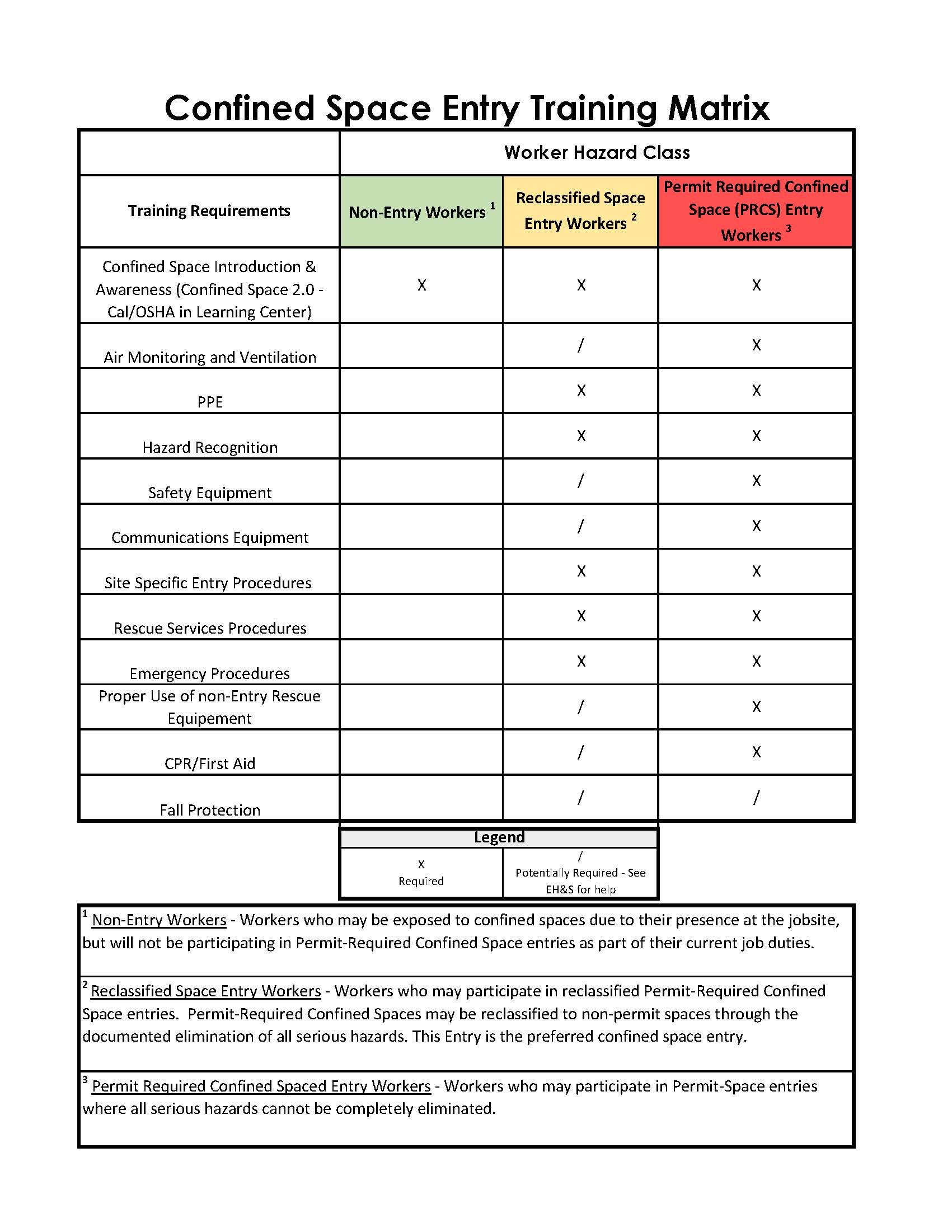UCSB has numerous areas that meet the definition of a confined space. Both Federal and State regulations require employers to implement practices and procedures that protect employees from hazards associated with confined space. Hundreds of workers are injured and killed each year while working in confined spaces. An estimated 60% of the fatalities have been among the would-be rescuers. Confined spaces can be below or above ground, may or may not be labeled, and can be found in almost any workspace. A confined space, despite its name, is not necessarily small. Examples of possible confined spaces include silos, sumps, vats, pits, tanks, vessels, ducts, plenums, bins, tubs, hoppers, vaults, sewers, pipes, access shafts, truck or rail tank cars, aircraft wings, boilers, holes, and utility holes. Ditches and trenches may also be a confined space when access or egress is limited.
The principal objective of the UCSB Confined Space Program is to ensure the health and safety of employees entering and working in campus confined spaces by:
- Identifying all campus confined spaces and determining which spaces are permit-required.
- Posting appropriate signage and providing training so that individuals recognize the hazards associated with confined spaces and will not enter a confined space unless authorized to do so.
- Implementing a permit system to ensure safe and legal entry into permit-required confined spaces.
The definition of a confined space is an enclosed or partially enclosed area, that is:
- Large enough for an employee to enter and perform assigned work; and
- Has limited or restricted means for entry or exit; and
- Is not designed for continuous employee occupancy
A permit-required confined space (PRCS) is a confined space that has one or more of the following characteristics:
- Contains or has the potential to contain a hazardous atmosphere;
- Contains a material that has the potential for engulfing an entrant (e.g. water, sand, dirt);
- Has an internal configuration such that an entrant could be trapped or asphyxiated by inwardly converging walls or by a floor which slopes downward and tapers to a smaller cross-section, or,
- Contains any other recognized serious safety or health hazard
Supervisor & Departmental Responsibilities
Departments and department supervisors have the primary responsibility of ensuring the health and safety of their employees. These responsibilities include but are not limited to:
- Identifying departmental controlled confined spaces and ensuring they are properly classified.
- Ensuring proper signage is posted where necessary.
- Ensuring safe and legal entries by following all regulatory and UCSB Confined Space Program requirements.
- Ensuring that employees who may encounter confined spaces are trained to recognize them and not to enter them unless authorized and properly trained to do so.

EH&S Resources & Services
Environmental Health & Safety (EH&S) has administrative responsibility for the UCSB Confined Space Program, and will assist departments in meeting their requirements under the program upon request. Specific EH&S Services and Resources are listed below:
- UCSB Confined Space Program Manual
- Four-Gas Training Form and Usage Guide
- Confined Space Entry Training is available online through the UC Learning Center (titled "Confined Spaces 2.0 - Cal/OSHA") or in-person by contacting the Industrial Safety Program at ehs-industrialsafety@ucsb.edu.
- UCSB Confined Space Program Compliance Checklist
- UCSB Confined Space Entry Permit
- UCSB Confined Space Entry Flow Chart
- Assistance with identifying and classifying their confined spaces as requested.
- Assistance with atmospheric testing and equipment selection as needed.
- Maintains a master list of campus confined spaces and provides centralized recordkeeping.
Additional Resources
For questions regarding the UCSB Confined Spaces Program, space entry or classification, or to obtain confined space entry equipment contact the Industrial Safety Program at ehs-industrialsafety@ucsb.edu.